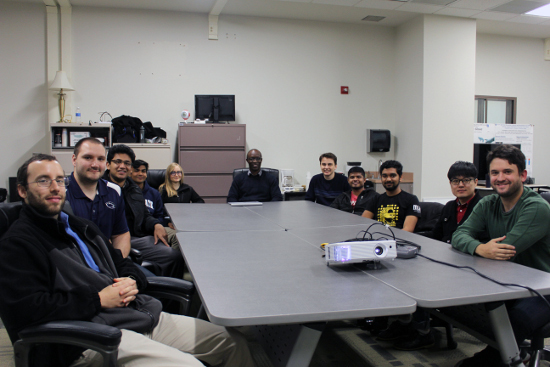Communications of the ACM
Can Computers Be Creative?

Credit: Huffington Post
Researchers from Pennsylvania State University have received $900,000 to teach computers how to generate original design ideas and then determine if those ideas are technically feasible which, in terms of national security, would give the United States a considerable competitive advantage in its technology industries.
The Defense Advanced Research Projects Agency (DARPA) is supporting the 18-month project titled "Generative Adversarial Networks for Design Exploration and Refinement," or GANDER.
"We are trying to determine if we can train a computer to do multiple things," says Conrad Tucker, associate professor of engineering design and industrial engineering, who is a co-principal investigator (PI) on the project. "First, we want to train a computer to generate novel engineering design ideas, and then we want to train it to determine whether or not those generated ideas make any sense in the real world."
Michael Yukish, head of the Manufacturing Product and Process Design Department at the Penn State Applied Research Laboratory, is the project lead. Tim Simpson, Paul Morrow Professor in Engineering Design and Manufacturing, is a co-PI.
What's new about this approach to machine learning is that the researchers are moving away from solely teaching a computer how to classify the difference between things in an environment, such as the difference between a car or a lamppost. They are attempting to teach computers to be creative — to have them generate new concepts, which is critical when it comes to engineering design.
The domain of deep learning that the researchers are exploring is called generative adversarial networks (GAN). GANs consist of two competing neural networks: one is generating ideas and the other is discriminating to determine if the idea makes any sense.
"It's this iterative process until the idea generator network is able to fool the discriminator network that a generated idea really is viable," Tucker says.
In order to be able to create the discriminator network, the research team is proposing to use simulation environments (i.e. similar to those used in virtual reality) to embed knowledge about physics and physical properties of the universe so that as designs are generated, they are grounded in the physical laws that govern the universe.
"Essentially, it's these two paradigms that are coming together and if successful, would enable a wide range of industries to rapidly explore novel designs," Tucker says. "Anyone can generate new ideas. The challenge is typically filtering out feasible ideas from infeasible ones, especially as they pertain to the physical laws of nature. Since our proposed method is grounded in some type of physical law of nature, the machine-generated ideas will be guided toward design feasibility during the actual idea generation phase."

Conrad Tucker (center) and his team of GANDER project student researchers
in Penn State's Design Analysis Technology Advancement Lab.
Tucker sees many applications that DARPA would be interested in exploring, such as in the defense agencies. For example, researchers could be trying to generate a new aircraft that has the benefits of being able to take off like a helicopter but also has the maneuverability or the speed of a traditional aircraft, such as a fighter jet. Another example would be a vehicle that can operate in many different domains — air, land, sea, and even space.
From an artificial intelligence (AI) point of view, being able to significantly reduce the time it takes for an AI agent to learn about the physical properties of its environment has tremendous potential for autonomous systems in general.
"We are trying to solve a very difficult, very complex problem that has not been solved before," Tucker says. "We are training a computer to become an expert designer — something that takes human beings years to perfect. We are also embedding physical characteristics of our universe into a computer and training it how to understand those properties. The synergy between the idea that's generated and the idea being grounded in some type of physical law is the major strength of this project."
Graduate students Matt Dering (computer science), James Cunningham (computer science) and Kevin Lesniak (industrial engineering), along with several undergraduate engineering students, are assisting on the project.
No entries found